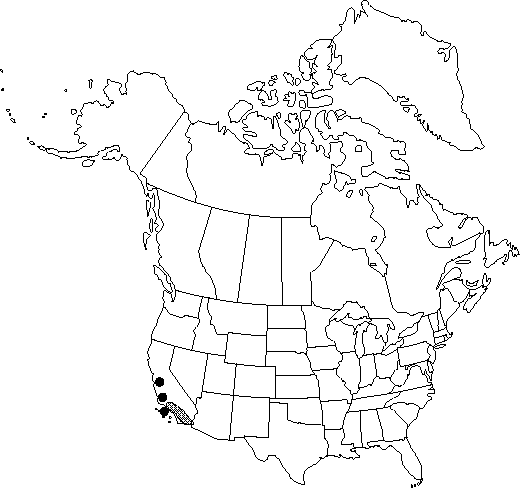Difference between revisions of "Meconella denticulata"
Bull. Calif. Acad. Sci. 2: 59. 1886.
FNA>Volume Importer |
imported>Volume Importer |
||
| Line 54: | Line 54: | ||
|publication year=1886 | |publication year=1886 | ||
|special status=Endemic | |special status=Endemic | ||
| − | |source xml=https:// | + | |source xml=https://bibilujan@bitbucket.org/aafc-mbb/fna-data-curation.git/src/bb6b7e3a7de7d3b7888a1ad48c7fd8f5c722d8d6/coarse_grained_fna_xml/V3/V3_957.xml |
|genus=Meconella | |genus=Meconella | ||
|species=Meconella denticulata | |species=Meconella denticulata | ||
Revision as of 23:07, 27 May 2020
Plants 0.3-2.1 dm. Stems erect to decumbent. Leaves 2-30(-40) mm; basal with blade spatulate; proximal cauline whorled, blade linear-spatulate; distal opposite or whorled, blade broadly linear to ovate; petiole to 3 cm; margins entire or occasionally denticulate. Inflorescences: peduncle 1.5-5 cm. Flowers: receptacle ± as long as broad, not expanded into ring beneath calyx; petals white, occasionally with obscure yellowish green patch near base, narrowly ovate, nearly equal, 2-6 × 1-2 mm, apex rounded; stamens 6 in 1 series; filaments ± equal, nearly as broad as anthers, tapering from base; anthers linear-oblong, usually at least 1/2 length of filaments. Capsules to 30 × 2.5 mm. 2n = 16.
Phenology: Flowering early–late spring.
Habitat: Moist, partly shaded slopes in chaparral or oak-pine woodlands
Elevation: 100-1000 m
Discussion
Plants from the southern end of the range tend to have longer anthers and shorter filaments.
Selected References
None.
